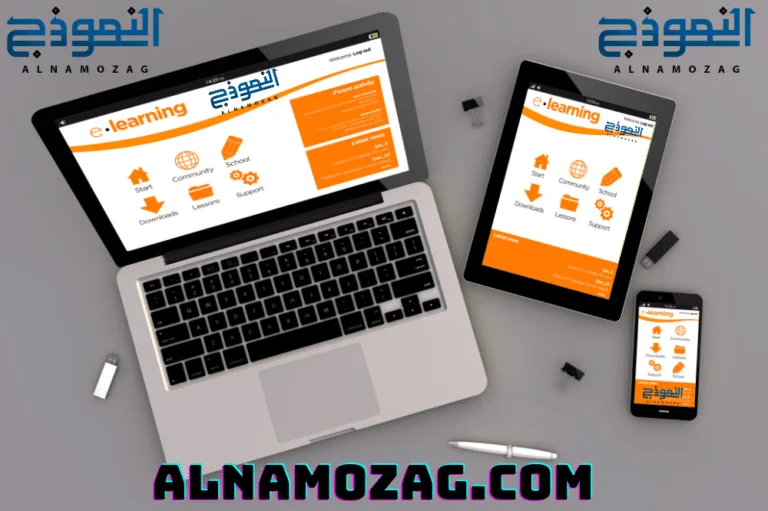Designing Online Teaching Platforms
In today’s digital age, e-learning has become an integral part of the global education system. With rapid technological advancements and the widespread availability of the internet, online teaching platforms have emerged as an effective and organized way to deliver educational content to students worldwide. Designing educational platforms is a critical step towards providing a comprehensive and excellent learning experience.
The benefits that students and teachers can gain from these platforms are numerous. For students, such platforms allow access to diverse educational resources available 24/7, which fosters independent learning and skill development. In addition, these platforms offer rich interactive experiences, including educational videos, short quizzes, and discussion forums, all of which enhance student comprehension and engagement with academic materials.
For teachers, designing online teaching platforms allows them to reach a wider audience and deliver lessons in innovative ways. Teachers can leverage the data analytics tools available on these platforms to assess student performance, identify strengths and weaknesses, and thus provide personalized support to each student. Furthermore, online education simplifies the organization and management of lessons and educational materials more efficiently.
In conclusion, designing online teaching platforms has become indispensable in the digital age, offering countless opportunities to enhance and improve the quality of education. Through learning on these platforms, both students and teachers can benefit from a flexible and diverse learning environment, leading to better educational outcomes.

Key Features of a Good Teaching Platform
When designing educational platforms, focusing on key features is essential to ensure the effectiveness of the learning process. One of the most prominent features is ease of use. The user interface should be intuitive and easy to navigate, allowing teachers and students to access educational content effortlessly.Additionally, immediate interaction is a crucial element for any online teaching platform. The platform should include effective communication tools, such as live chat and forums, that enable students to ask questions and engage in discussions with teachers and peers in real time, thereby enhancing the online learning experience and promoting continuous engagement.
Assessment tools are also indispensable. The platform should allow teachers to easily create quizzes and surveys, providing immediate feedback to students. This helps track students’ progress and identify areas that need improvement. Additionally, there should be the ability to generate comprehensive analytical reports on student performance.
The integration of diverse educational content is another element that must be present when designing online teaching platforms. The platform should support various media types such as text, videos, presentations, and audio files, ensuring a comprehensive learning experience that caters to all learning styles.
In the end, understanding key features like ease of use, instant interaction, assessment tools, and diverse content integration can significantly contribute to the success of your educational platform. This makes the process of teaching students through the educational platform a rich and effective experience.
Steps to Create an Online Teaching Platform
Designing online teaching platforms is a multifaceted task that requires careful planning and systematic execution. The first step is defining the goal and target audience. It is essential to understand the educational goals you aim to achieve and the students to whom you will provide educational content. This will help in choosing the right tools and technologies.
The Next Step
The next step is choosing the appropriate technology. The technology must align with the platform’s educational needs, whether in terms of interactive features or ease of use. There are many tools and applications available to help design effective educational platforms, such as Learning Management Systems (LMS) and interactive content creation tools.
Interface Design
Interface design is another essential part of the process. The user interface should be intuitive and easy to use, considering the user experience. An attractive and comfortable interface helps enhance the student experience and make learning more effective. This step may include designing the logo, selecting colors, and logically organizing content.Preparing Educational Content
Preparing educational content is the stage where you can use your creativity and knowledge to deliver valuable education. The content should be comprehensive and organized, with interactive tools such as videos, articles, and quizzes to facilitate understanding and engagement. Make sure to regularly update the content to ensure the provision of current and reliable information.
In the end, you should thoroughly test the platform before launching it to ensure it works correctly and meets the students’ needs. By following these steps, you can design a strong educational platform that meets learners’ needs and achieves online education goals efficiently and effectively.
Managing Virtual Classrooms
When it comes to designing online teaching platforms, using modern tools and technologies can significantly enhance the effectiveness of the educational process. One of the most important tools is Learning Management Systems (LMS), which allow teachers to organize study content, track student progress, and manage virtual classrooms. Platforms like Moodle and Canvas are among the leading systems in this field, offering easy-to-use interfaces and multiple functions to improve the online learning experience.
In addition to LMS, interactive video tools play a central role in designing online teaching platforms. These tools allow teachers to create engaging video content that students interact with, enhancing their understanding of academic materials. Tools like Panopto and Kaltura allow the addition of interactive questions and real-time explanations within videos, making the learning process more interactive and comprehensive.
Lastly, assessment and quiz software is crucial in designing educational platforms. These programs help create interactive tests, continuous evaluations, and surveys, contributing to measuring students’ understanding of the course content.
Incorporating these tools and technologies helps design effective and comprehensive online teaching platforms that improve the quality of education and better meet students’ needs. By adopting these tools and techniques, it is possible to create advanced educational platforms that meet the demands of the modern digital era.



